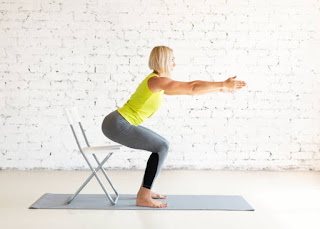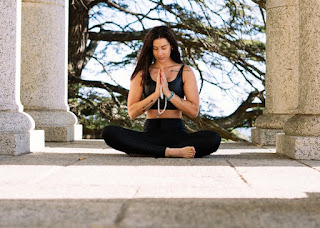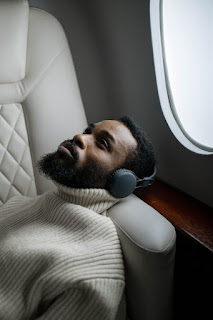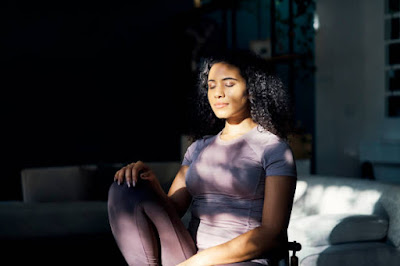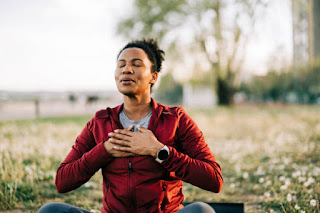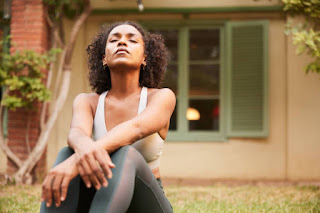Core Strength and Stability: Adaptive Chair Yoga for Beginners
Core Strength and Stability: Adaptive Chair Yoga for Beginners
The foundation of a healthy body lies in a strong core. Not only does it help stabilize your posture, but it also supports balance, mobility, and overall strength. Many people believe core training involves vigorous exercise on the floor, but you can build core strength in a much more accessible way—through adaptive chair yoga.
This guide is designed for beginners who want to focus on improving core strength using chair yoga techniques. Whether you have limited mobility, balance challenges, or simply prefer to avoid getting on the floor, this routine will help you strengthen your core safely and effectively.
The Importance of Core Strength
The muscles in your core include not only your abs but also your back, obliques, pelvis, and even the muscles in your hips. These muscles work together to support your body during everyday movements like bending, reaching, and standing. For those with limited mobility, strengthening the core is crucial to maintaining balance, preventing falls, and improving overall functional movement.
Chair yoga provides a safe and adaptive environment for building core strength, allowing participants to gain the benefits of traditional core exercises without strain or risk of injury.
Benefits of Chair Yoga for Core Strength
- Accessibility: Chair yoga is suitable for everyone, regardless of fitness level or mobility.
- Improved Stability: A strong core enhances balance, reducing the risk of falls.
- Increased Mobility: Strengthening your core can lead to improved posture and greater ease in performing daily tasks.
- Low-Impact: Chair yoga provides gentle, low-impact movements, minimizing stress on the joints and back.
Now, let’s dive into a beginner-friendly routine that focuses on core strength and stability using adaptive chair yoga.
Adaptive Chair Yoga Routine for Core Strength
Preparation:
- Find a sturdy chair with no arms, preferably with a flat seat. Make sure it’s on a stable surface where it won’t slip.
- Sit upright with your feet flat on the floor, knees bent at a 90-degree angle. Engage your core by gently pulling your belly button toward your spine.
- Keep your shoulders relaxed and your back straight.
Seated Cat-Cow (Spinal Flexion and Extension)
How to Perform:
- Begin by sitting tall with your hands resting on your thighs.
- Inhale and arch your back, lifting your chest and tilting your pelvis forward. This is the cow pose.
- Exhale and round your spine, pulling your belly button in and tucking your chin toward your chest. This is the cat pose.
- Continue flowing between these two movements with each breath for 5-8 breaths.
Why It Works:
This movement strengthens the core by promoting spinal flexibility and engaging the deep abdominal muscles that support posture.
Seated Knee Lifts (Hip Flexor and Lower Ab Activation)
How to Perform:
- Sit tall with your feet flat on the floor and hands resting on the sides of the chair.
- On an inhale, lift your right knee towards your chest, engaging your lower abdominals.
- Exhale and slowly lower your foot back to the ground.
- Repeat with your left leg, alternating sides for 10 repetitions per leg.
Why It Works:
This exercise targets the lower abdominals and hip flexors, which are essential for core stability and mobility.
Seated Bicycle Twists (Oblique Activation)
How to Perform:
- Sit on the edge of the chair, keeping your feet flat on the ground and your spine straight.
- Place your hands behind your head, elbows pointing outwards.
- Lift your right knee toward your chest and twist your torso so your left elbow moves towards your right knee.
- Lower your leg and untwist, then repeat on the opposite side.
- Perform 8-10 twists on each side.
Why It Works:
Bicycle twists engage the obliques, which are key to improving rotational stability and strengthening the sides of your core.
Seated Leg Extensions (Lower Core and Quadriceps)
How to Perform:
- Sit up tall in the chair with your feet flat on the floor.
- Engage your core and slowly extend your right leg out in front of you, keeping it straight.
- Hold for a breath, then lower your leg back to the floor.
- Repeat on the other side. Aim for 10 repetitions per leg.
Why It Works:
This exercise strengthens the lower core and engages the quadriceps, supporting stability and leg strength—critical for balance and mobility.
Seated Side Bend (Lateral Flexion for Obliques)
How to Perform:
- Sit tall in your chair with both feet flat on the ground.
- Reach your right arm up towards the ceiling, then slowly lean to the left, bending at your waist.
- Feel the stretch along your right side. Hold for 2-3 breaths, then return to the starting position.
- Switch sides and repeat. Perform 5-6 bends per side.
Why It Works:
This side-bending movement stretches and strengthens the oblique muscles, which help stabilize your spine and improve overall core function.
Seated Marching (Cardio and Core)
How to Perform:
- Sit tall with your feet flat on the floor and hands on your thighs or the sides of the chair.
- Lift one knee at a time in a marching motion, as if you’re walking in place.
- Engage your core throughout, keeping your back straight.
- March in place for 30-60 seconds.
Why It Works:
This movement increases your heart rate while engaging the core muscles to stabilize your body as you move. It’s a great way to add a cardio element to your core-focused routine.
Seated Forward Bend (Stretch and Relax)
How to Perform:
- Sit with your feet hip-width apart, toes pointing forward.
- Inhale and lengthen your spine, reaching your arms overhead.
- Exhale as you gently fold forward, reaching for your toes or resting your hands on your shins.
- Hold for 3-5 breaths, then slowly return to a seated position.
Why It Works:
This forward bend helps stretch the back muscles and release tension, providing a calming end to your routine while maintaining core engagement.
Modifications and Tips for Adaptive Yoga
Chair yoga is all about adapting poses to meet your needs. If you’re dealing with specific limitations, here are a few suggestions:
- Supportive Props: Use a yoga block or rolled-up towel under your feet if they don’t comfortably reach the floor, ensuring proper alignment and stability.
- Reduce Range of Motion: You can modify each pose to reduce strain by minimizing how far you lift your legs or twist your body. Start small and increase your range of motion as you gain strength.
- Focus on Breath: Core strength also comes from mindful breathing. Focus on exhaling fully when engaging your core muscles during each exercise.
Conclusion
Core strength is a vital component of overall well-being, especially as we age or deal with mobility issues. Adaptive chair yoga offers a gentle yet effective way to strengthen your core, improve stability, and enhance your quality of life. This beginner-friendly routine will help you build strength over time, offering long-term benefits for balance, posture, and daily functional movements.
Remember, consistency is key. Practicing this routine a few times a week can lead to noticeable improvements in core stability and overall strength, allowing you to feel more confident and capable in your body.
Whether you’re just starting out with yoga or adapting it to meet your needs, chair yoga provides a supportive and accessible approach to fitness. So, take a seat, engage your core, and begin your journey toward better strength and stability.
Explore More on Adaptive Yoga
As you work through this series, I encourage you to explore some of my other articles on yoga, which dive deeper into adaptive practices and the benefits of chair and restorative yoga:
- A beginners guide to Adaptable Chair Yoga
- Yoga therapy for Mobility and Rehabilitation: how to use chair yoga
- The Essentials of Restorative Yoga: Poses, Props, and Practices
- Integrating Strength, Flexibility, and Balance: Adaptive Yoga Flow
- Balance and Coordination with Adaptive Yoga: Gentle Practices for All Ages
- Flexibility and Range of Motion: Chair Yoga for Limited Mobility
- Core Strength and Stability: Adaptive Chair Yoga for Beginners
- Breath Awareness and Mindful Movement
- 6-Week Adaptive Yoga Course: Build Strength, Flexibility, and Balance
